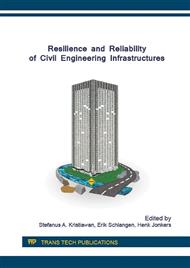p.220
p.226
p.233
p.240
p.246
p.252
p.259
p.265
p.274
Structural Assessment: A Case Study of Low Rise Building Performance after Experiencing Earthquake
Abstract:
The 2006 Yogyakarta earthquake was only M6.2 Richer scale, but its epicenter was very shallow and very close to the dense populated area. The considered building is a low rise reinforced concrete structure and it exhibited significant shear cracks near the beam’s ends of the structure. The structural assessment was not carried out immediately after earthquake with many reasons. Structural assessment of the considered building has been carried out. The considered building is 5-story ordinary reinforced concrete structure with single bay beam. Since the specific Indonesian Codes for this purpose is not available, finally assessment was conducted by using [2,3,4,5] Codes. Results of the assessment showed that the demand capacity ratio DCR of shear at ends of the beams already greater than limit value 2.0, means that a further analysis such as non linear static (push over) should be carried out. Result of the assessment showed that the performance of the building is still in Immediately Occupancy (IO) level and this result truly meets with the building response soon after earthquake. However, strengthening the shear capacity of the beams needs to be carried out.
Info:
Periodical:
Pages:
246-251
Citation:
Online since:
July 2016
Authors:
Price:
Сopyright:
© 2016 Trans Tech Publications Ltd. All Rights Reserved
Share:
Citation:


